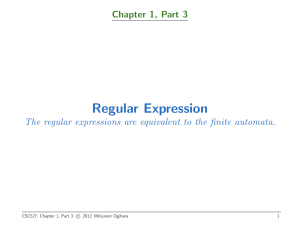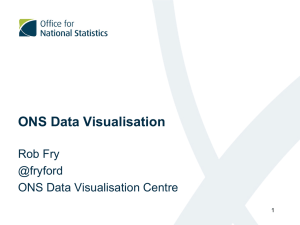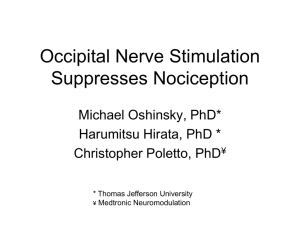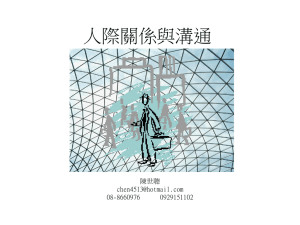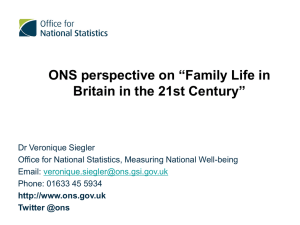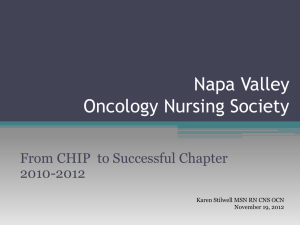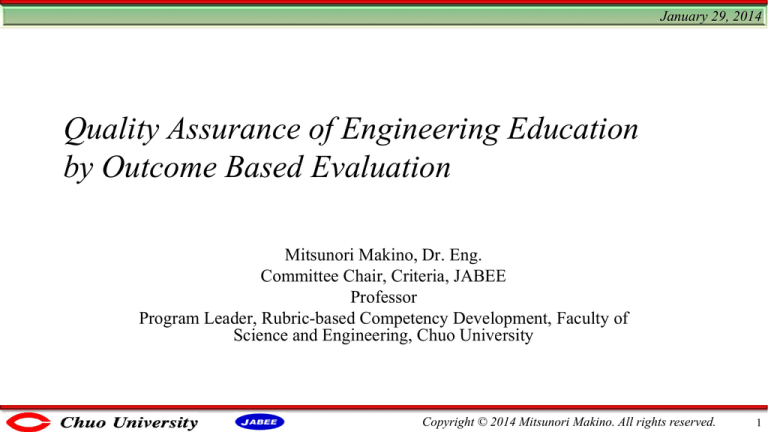
January 29, 2014
Quality Assurance of Engineering Education
by Outcome Based Evaluation
Mitsunori Makino, Dr. Eng.
Committee Chair, Criteria, JABEE
Professor
Program Leader, Rubric-based Competency Development, Faculty of
Science and Engineering, Chuo University
Copyright © 2014 Mitsunori Makino. All rights reserved.
1
Self Introduction of Mitsunori Makino
• Graduated from Waseda University
– B.Eng. in 1987, M.Eng. in 1989, Dr. Eng. in 1992
• Faculty member of Chuo University since 1992
– 2004- : Professor
– 2008- : Leader of Rubric-based Competency Development Project,
Faculty of Science and Engineering, Chuo University,
(www.facebook.com/ChuoCompetency)
– 2009-2013: Vice Dean, Faculty of Science and Engineering
• JABEE
– Chairperson of Criteria Committee, JABEE (www.jabee.org)
Copyright © 2014 Mitsunori Makino. All rights reserved.
2
Outline
• What is “outcomes-based” ? Quality assurance of higher education
– Input-based vs. outcomes-based
• Washington Accord --- World-wide accreditation alliance of
engineering education
• How to assess graduates’ knowledge and performance
– Rubric
– Rubric for achievement in a course
– Rubric for achievement for ….
• Discussion
• Conclusion
Copyright © 2014 Mitsunori Makino. All rights reserved.
3
What is quality assurance, especially in higher education?
• The maintenance of a desired level of quality in a service or product,
especially by means of attention to every stage of the process of
delivery or production.
from Oxford Dictionary
(http://www.oxforddictionaries.com/definition/english/quality-assurance?q=quality+assurance)
• In the higher education…
The maintenance of a desired level or higher of quality in graduates
by means of attention to every stage of the education system
Copyright © 2014 Mitsunori Makino. All rights reserved.
4
Why do we need the quality assurance in engineering education by the third
party? (1/2)
• The 1st step to professional
Practice
Training
and
Experience
Graduate Attributes: Indicate
that program objectives are
satisfied
Accredited
Program
Observe Code of Conduct
and
Maintain Competence
Meet Standard
for Professional
Competency
Meet Standard
for Engineering
Education
Copyright © 2014 Mitsunori Makino. All rights reserved.
5
Why do we need the quality assurance in engineering education by the
third party? (2/2)
• The substantial equivalence in the world:
Applied to educational programs means that
two programs, while not meeting a single set
of criteria, are both acceptable as preparing
their respective graduates to enter formative
development toward registration.
Signatory A
Accredited
Program
Practice
Training
and
Experience
Substantial
Equivalence
Signatory B
Accredited
Program
Copyright © 2014 Mitsunori Makino. All rights reserved.
6
How can we show the quality of engineering education?
• Contents, environment
– Book of Knowledge
Benchmarks for what?
• Environment
– Budget
– Facilities
• Outcomes
Necessity of “educational objective”
& “performance criteria”
– Skills & competencies of graduates based on professional knowledge
•
•
•
•
Project/Research output (accepted papers, patents...)
Enrollment numbers in professional qualification
Employment as engineer
…
Copyright © 2014 Mitsunori Makino. All rights reserved.
7
Educational outcomes must inevitably given, not happen
• Educational program is planned in advance, connected with its goal
and/or objectives, about graduates’ performance and knowledge (not
“what is taught” but “what is equipped”)
• If so, the educational program can be trusted as assured human
resource development. (Graduates are expected a certain level of
their knowledge and competency)
Copyright © 2014 Mitsunori Makino. All rights reserved.
8
Graduate Attributes & Disclosure of Three Policies of Admission, Curriculum
and Diploma by MEXT
Exemplified graduate attributes:
1. Knowledge and understanding
i.
ii.
2.
Versatile skill
i.
ii.
iii.
iv.
v.
3.
Communication skill
Quantitative skill
Information literacy
Logical thinking
Problem solving
Each university in Japan has and discloses
its diploma policy regarding the attributes
Behaviors and intentionality
i.
ii.
iii.
iv.
v.
4.
Understanding of knowledge of multiple/different cultures
Understanding of knowledge of human culture, society and nature
Self-control
Teamwork and leadership
Ethics
Social responsibility as civil
Ability of lifelong learning
Integrated learning experiences and creative thinking
Copyright © 2014 Mitsunori Makino. All rights reserved.
9
IEA Graduate Attributes
• The 2nd version was released in June 2009, modified in 2013
• Graduates of engineering schools should equip both of “Engineering
Knowledge” and “Graduate Attributes”.
• These profiles are defined for
– Washington Accord (WA): Engineering education
– Sydney Accord (SA): Technologist education
– Dublin Accord (DA): Technician education
Copyright © 2014 Mitsunori Makino. All rights reserved.
10
Washington Accord Membership (as of 2013)
Accreditation bodies
Provisional status
6 Founding Members
Signatory
1989
HKIE (HK)
No system at that time
1995
ECSA (South Africa)
1994
1999
JABEE (Japan)
2001
2005
IES (Singapore)
2003
2006
BEM (Malaysia)
2003
2009
ASIIN (Germany)
2003 but was removed in 2013
ABEEK (RP Korea)
2005
2007
IEET (Chinese Taipei)
2005
2007
AEER (Russia)
2007
2012
AICTE (India)
2007
IESL (Sri Lank)
2007
MUDEK (Turkey)
2010
PEC (Pakistan)
2010
COE (Thailand)
Submitted in 2010 but was differed
BAETE (Bangladesh)
2011
CAST (PR China)
2013
PTC (The Philippines)
2013
Indonesia
Interest
Peru
Interest
2011
Copyright © 2014 Mitsunori Makino. All rights reserved.
11
IEA (Engineering) Knowledge Profile
1. Natural sciences
2. Mathematics, numerical analysis, statistics, formal aspects of computer
and information science
3. Engineering fundamentals
4. Engineering specialist knowledge
5. Knowledge supporting engineering design
6. Knowledge of engineering practice
7. Comprehension of the role of engineering in society and identified
issues in engineering practice in the discipline
8. Engagement with selected knowledge in the research literature of the
discipline
Copyright © 2014 Mitsunori Makino. All rights reserved.
12
IEA Graduate Attributes Profile
1. Engineering Knowledge
2. Problem Analysis
3. Design/development of solutions
4. Investigation
5. Modern Tool Usage
6. The Engineer and Society
7. Environment and Sustainability
8. Ethics
9. Individual and Team work
10. Communication
11. Project Management and Finance
12. Life long learning
Copyright © 2014 Mitsunori Makino. All rights reserved.
13
Quality Assurance by JABEE Criteria
Criterion 1 : Learning Outcomes
A set of clear students’
performance, planned by program,
enough to achieve the outcomes
Criterion 4:Educational Improvement
Performance Criteria
Implementation
Criterion 2:Educational Methods
What & how high?
Assurance through review and
evaluation
Criterion 3:Achievement of
Learning Outcomes
Copyright © 2014 Mitsunori Makino. All rights reserved.
14
Learning Outcomes in JABEE 2012 Criteria
(a) An ability of multidimensional thinking with knowledge from global perspective
(b) An ability of understanding of effects and impact of engineering on society and
nature, and of engineers’ social responsibilities (engineering ethics)
(c) Knowledge of and an ability to apply mathematics, natural sciences and
information technology
(d) Knowledge of the related engineering disciplines, and an ability to apply it to
solve problems
(e) An ability to design to respond to requirements of the society by using various
sciences, technologies and information
(f) Communication skills including logical writing, presentation and debating in
Japanese and fundamental communication skills on the international scene.
(g) An ability of independent and life-long learning
(h) An ability to manage and accomplish tasks systematically under given constraints.
(i) An ability to work as a team member
Copyright © 2014 Mitsunori Makino. All rights reserved.
15
JABEE’s Outcomes-based Assessment
• Instead of structural assessment, the contents of education are
assessed as outcomes.
• JABEE does not question the approach of the program as long as the
outcomes are assured.
• The program shall set up and demonstrate with benchmarks the
outcomes, which the program expects.
• The outcomes of the program are evaluated by the society in the era
of information.
Copyright © 2014 Mitsunori Makino. All rights reserved.
16
How to make students learn by themselves and evaluate appropriately
graduates attributes?
• “Knowledge” profile may be assured by suitable curriculum with a
certain assessment (paper exam, report, …)(almost input-based).
• “Ability” may be implicit and expressed as his/her action. How do
we “teach” action profile?
Copyright © 2014 Mitsunori Makino. All rights reserved.
17
Rubric-based Competency Development
(including assessment) in Chuo University
Copyright © 2014 Mitsunori Makino. All rights reserved.
18
Rubric: Evaluation of Performance & Level
• Nobody can evaluate implicit (inside).
• Rubrics check performance and level which he/she presented as some
actions
• For assurance of learning outcomes, behavior characteristics is
important. (happened actions is not important)
Therefore, rubrics of “competencies” should be considered.
Copyright © 2014 Mitsunori Makino. All rights reserved.
19
What is rubric?
• Rubric: a tool to evaluate level of performance
• Three elements:
– Dimensions
…performance criteria
– Scales
…levels of performance
– Descriptors
• Evaluation of performance of study items
• Through self-check by students and evaluation by teachers, the rubric
help students’ awakening.
http://www.abet.org/Linked%20Documents-UPDATE/webinars/webinar-developing-rubrics-2010.pdf
Copyright © 2014 Mitsunori Makino. All rights reserved.
20
Rubric: Trends in Higher Education
• Especially effective for PBL
• Objectivity of learning outcomes and mutual understanding between
students and professors
• Effective of course design and FD
Copyright © 2014 Mitsunori Makino. All rights reserved.
21
Graduate attributes also use the rubric, showing differences between
engineering, technologist and technician education.
Range of Problem Solving (IEA)
WA requires “complex problems”
Copyright © 2014 Mitsunori Makino. All rights reserved.
22
Rubric: Examples in U.S. Engineering Education
• ABET Webinar: Developing Rubrics
http://www.abet.org/webinar-developing-rubrics.shtml
• WSU-EERC (Engineering Education Research Center, Washington
State University) IDEALS
http://ideals.tidee.org/
Copyright © 2014 Mitsunori Makino. All rights reserved.
23
Rubric-based Competency Development Project in Faculty of Science and
Engineering, Chuo University
• Kick-off: Summer, 2008
• National Project “Good Practice in Higher Education” from autumn
2009 to March 2012
• Goal:
– Clarification of graduate attributes (competencies) of Faculty of Science and
Engineering, Chuo University
– Development of systematic curriculum and teaching method of the
competencies
• Project leader: Mitsunori Makino
• Leading department: Information and System Engineering (Computer
Engineering)
Copyright © 2014 Mitsunori Makino. All rights reserved.
24
Procedure of Competency Development in Chuo Univ.
1.
2.
3.
4.
5.
Definition of Educational Goal
Definition of competencies as graduate attributes
Detailed competencies with levels
Application to courses
Sharing information on good practices
Copyright © 2014 Mitsunori Makino. All rights reserved.
25
Seven Competencies as Graduate Attributes in ISE Department
Competency Keyword
Defi ni tion
Level
0
1
2
Communi ca tion a bi l i ty
After ha vi ng correctly
unders tood other
peopl e's opi ni ons or
wri tings , cl ea rl y expres s
one's own opi ni ons
a bout them. Us e
effective expl a na tion
methods or techni ques
to pers ua de i nvol ved
pa rties .
Probl em-s ol vi ng a bi l i ty
Correctly unders ta nd the
i s s ues . Devi s e a nd
Correctly unders ta nds
i mpl ement s ol utions .
Correctly unders ta nds
Is una bl e to correctly
s el f-di s covered or gi ven
Veri fy the res ul ts a nd
gi ven i s s ues a nd tri es to
unders ta nd gi ven i s s ues .
i s s ues . Devi s es a nd
refl ect them i n pl a n
s ol ve them.
i mpl ements s ol utions .
revi ews or s ubs equent
pl a nni ng.
Knowl edge a cqui s i tion
a bi l i ty
Ha vi ng ma de efforts to
continuous l y ga ther a nd
s i ft through a deep a nd
broa d ra nge of
i nforma tion, a cqui re,
a ppl y a nd util i ze
knowl edge a nd
expertis e.
Is una bl e to unders ta nd
other peopl e a nd
expres s hi s /her own
opi ni ons to them.
Is una bl e to ga ther
i nforma tion by
hi ms el f/hers el f a nd
a cqui re new knowl edge
a nd expertis e.
Is on the whol e a bl e to
unders ta nd other
peopl e's opi ni ons a nd
on the whol e expres s
hi s /her own opi ni on to
them.
Is on the whol e a bl e to
ga ther i nforma tion by
hi ms el f/hers el f a nd
a cqui re new knowl edge
a nd expertis e.
Li s tens to other peopl e
a nd communi ca tes
s moothl y by expres s i ng
hi s /her own opi ni ons to
them.
3
Ha vi ng unders tood other
peopl e, expres s es
hi s /her own opi ni ons i n
a wa y tha t i s ea s y to
unders ta nd by devi s i ng
methods for gi vi ng
expl a na tions , a nd thus
ga i ns a s uffi ci ent degree
of unders ta ndi ng.
4
Us es a ra nge of methods
or techni ques for gi vi ng
expl a na tions a nd thus
ga i ns a s uffi ci ent degree
of mutua l unders ta ndi ng
wi th peopl e.
Di s covers i s s ues by
hi ms el f/hers el f, s el ects
the bes t s ol ution a nd
i mpl ements thi s
s ys tema tica l l y. Veri fi es
the res ul ts from va ri ous
a s pects a nd refl ects
them i n s ubs equent
pl a nni ng.
Ha vi ng ma de efforts to
continuous l y ga ther a nd
Ha vi ng ma de efforts to
Underta kes a ca reful
s i ft through a deep a nd
ga ther a nd s i ft through a
exa mi na tion of ga thered
broa d ra nge of
deep a nd broa d ra nge of
i nforma tion, a nd
i nforma tion, a cqui res ,
i nforma tion, a cqui res ,
a cqui res , a ppl i es a nd
a ppl i es a nd util i zes
a ppl i es a nd util i zes
util i zes knowl edge a nd
knowl edge a nd expertis e
knowl edge a nd
expertis e.
i n wa ys tha t other
expertis e.
peopl e ha ve not thought
of.
Di s covers i s s ues by
hi ms el f/hers el f, a nd
devi s es a nd i mpl ements
s ol utions . Veri fi es the
res ul ts a nd refl ects them
i n pl a n revi ews or
s ubs equent pl a nni ng.
Copyright © 2014 Mitsunori Makino. All rights reserved.
26
Seven Competencies as Graduate Attributes in ISE Department
Competency Keyword
Orga ni zed beha vi or
ca pa bi l i ti es
Crea ti ve a bi l i ty
Defi ni ti on
Level
3
As certa i ns i n a
As certa i ns i n a
mul ti fa ceted a nd
mul ti fa ceted a nd
objecti ve wa y from
objecti ve wa y from
mul ti pl e pers pecti ves
mul ti pl e pers pecti ves
wha t s houl d be done to
wha t s houl d be done to
a chi eve tea m or
a chi eve tea m or
orga ni za ti ona l goa l s ,
orga ni za ti ona l goa l s ,
Unders ta nds common
Is a bl e to work when
rea ches a ppropri a te
rea ch a ppropri a te
Is una bl e to work i n a
goa l s i n tea mwork a nd
i ns tructed, but does not
judgments a nd a cts wi th
judgments a nd a ct wi th a tea m a nd beha ves i n a
beha vi or a nd a cts wi th a
ma ke a n effort to a chi eve
a s ens e of owners hi p.
s ens e of owners hi p.
wa y tha t i s s el f-centered.
s ens e of owners hi p i n
goa l s by hi ms el f/hers el f
When doi ng s o,
When doi ng s o,
order to a chi eve thes e.
demons tra tes wi th
demons tra te wi th others
others mutua l res pect for
mutua l res pect for ea ch
ea ch other's opi ni ons
other's i dea s a nd a ct
a nd a cts whi l e
whi l e devel opi ng a nd
devel opi ng a nd
ma i nta i ni ng
ma i nta i ni ng
rel a ti ons hi ps of trus t.
rel a ti ons hi ps of trus t.
Demons tra te i ntel l ectua l
curi os i ty, be i nteres ted
i n thi ngs wi thi n a nd
beyond one's a rea of
s peci a l i za ti on, obta i n
i dea s from thos e thi ngs
a nd concei ve
unprecedented i dea s .
When doi ng s o, obs erve
rel eva nt l a ws a nd
regul a ti ons , ha ve a
s ens e of ethi cs a nd ful fi l
the res pons i bi l i ty
engi neers ha ve to
s oci ety.
0
Is not i nteres ted i n new
i dea s a nd technol ogi es ,
even i f he or s he knows
a bout them.
1
Ha bi tua l l y col l ects
i nforma ti on rega rdi ng
hi s /her fi el d of i nteres t
a nd pa ys a ttenti on to
new i dea s a nd
technol ogi es .
2
4
Ha vi ng cons i dered
thoroughl y wha t s houl d
be done to a chi eve tea m
or orga ni za ti ona l goa l s
a nd the benefi ts for a l l
concerned, rea ches
a ppropri a te judgments
a nd does not a ct by
hi ms el f/hers el f but gi ves
di recti ons a nd gui des
peopl e a s to wha t they
s houl d a i m a t .
Demons tra tes
i ntel l ectua l curi os i ty, i s
Demons tra tes
i nteres ted i n thi ngs
i ntel l ectua l curi os i ty, i s
wi thi n a nd beyond
Demons tra tes wi dei nteres ted i n thi ngs
hi s /her a rea of
ra ngi ng i ntel l ectua l
wi thi n a nd beyond
s peci a l i za ti on, obta i ns
curi os i ty, rega rdl es s of
hi s /her a rea of
i dea s from thos e thi ngs
whether thi ngs a re
s peci a l i za ti on, obta i ns
a nd concei ves uni que
wi thi n or beyond hi s /her i dea s from thos e thi ngs
i dea s of the ki nd tha t
a rea of s peci a l i za ti on,
a nd concei ves
contri bute to the
a nd s tri ves to a pproa ch unprecedented i dea s .
devel opment of s ci ence
thi ngs by a cti vel y
When doi ng s o, obs erves
a nd technol ogy. When
i ncorpora ti ng new
rel eva nt l a ws a nd
doi ng s o, obs erves
knowl edge.
regul a ti ons , ha s a s ens e
rel eva nt l a ws a nd
of ethi cs a nd ful fi l s the
regul a ti ons , ha s a s ens e
res pons i bi l i ty engi neers
of ethi cs a nd ful fi l s the
ha ve to s oci ety.
res pons i bi l i ty engi neers
ha ve to s oci ety.
Copyright © 2014 Mitsunori Makino. All rights reserved.
27
Seven Competencies as Graduate Attributes in ISE Department
Competency Keyword
Defi ni ti on
Sel f-rea l i za ti on a bi l i ty
To el eva te ones el f,
cons ta ntl y purs ue new
goa l s , cons i der pa ths
towa rds thes e goa l s a nd
s tri ve to a chi eve them.
When doi ng s o, a l wa ys
a ct to i mprove s el fcontrol .
Speci a l i za ti on
(Depa rtment of
Informa ti on & Sys tem
Engi neeri ng)
On the ba s i s of broa d
a nd deep knowl edge a nd
experi ence, ma ke
a ppropri a te us e of
progra mmi ng a nd ICT
tool s , enga ge i n a ccura te
work a nd uti l i ze
i nforma ti on engi neeri ng.
Level
0
1
2
3
4
To el eva te
hi ms el f/hers el f,
To el eva te
cons ta ntl y s ea rches for
Determi nes cl ea r goa l s
hi ms el f/hers el f,
new goa l s a nd, when
If he/s he ha s a goa l ,
by hi ms el f/hers el f,
cons ta ntl y purs ues new
found, thi nks up the
Does not try to fi nd goa l s expres s es a des i re to
cons i ders pa ths towa rds goa l s , cons i ders pa ths
s hortes t route to
a nd does not a chi eve
a chi eve thi s goa l a nd
thes e goa l s a nd s tri ves
towa rds thes e goa l s a nd
a chi evi ng thes e goa l s
them, even i f gi ven.
s tri ves towa rd i t.
to a chi eve them. When
s tri ves to a chi eve them.
a nd s tri ves to a chi eve
doi ng s o, demons tra tes When doi ng s o, a l wa ys
them by fol l owi ng thi s
s el f-control .
a cts to i mprove s el fpa th. Even i f fa i l s , ma kes
control .
repea ted efforts to
a chi eve goa l s .
Pos s es s es a n extremel y
a dva nced s peci a l i s t
Pos s es s es a s ys tema ti c
knowl edge, i s a bl e to
La rgel y unders ta nds
unders ta ndi ng of
Pos s es s es a fra gmenta ry
unders ta nd hi ghl y
s peci a l i s t knowl edge,
s peci a l i s t knowl edge,
a ca demi c a bi l i ty a nd
s peci a l i s t i nforma ti on
a nd i s a bl e to
a nd i s a bl e to
Does not pos s es s a n
knowl edge, i s a bl e to
a nd judge i ts a ccura cy a t
unders ta nd i nforma ti on unders ta nd hi ghl y
a ca demi c a bi l i ty or
unders ta nd s i mpl e
the l evel of a s peci a l i s t
rel a ted to thi s , judge i ts s peci a l i s t i nforma ti on,
knowl edge to form the
i nforma ti on, judge i ts
a nd communi ca te
a ccura cy a nd ma ke
judge i ts a ccura cy a nd
founda ti ons for s tudyi ng a ccura cy a nd ma ke
hi s /her own a s s erti ons
hi s /her own a s s erti ons . ma ke hi s /her own
i nforma ti on a nd s ys tem s ma l l -s ca l e a s s erti ons ,
both domes ti ca l l y a nd
Is a bl e to underta ke
a s s erti ons . Is a bl e to
engi neeri ng.
but the preci s i on a nd
overs ea s . Is a bl e to
work tha t ha s a certa i n
underta ke work tha t i s
a ccura cy of hi s /her work
underta ke work tha t i s
s ta nda rd of preci s i on
a bove a certa i n s ta nda rd
i s i ns uffi ci ent.
a bove a certa i n s ta nda rd
a nd a ccura cy.
of preci s i on a nd
of preci s i on a nd a ccura cy
a ccura cy.
through s uperi or
i nnova ti ons .
Copyright © 2014 Mitsunori Makino. All rights reserved.
28
Two points for applying rubric to course assessment
1. Define the dimensions and scales which can be checked in the
course. Then descriptor at each level can be described according to
supposed students’ action.
2. If necessary, revise course which encourages students’ “awareness”
and “innovation.”
Copyright © 2014 Mitsunori Makino. All rights reserved.
29
Introduction of Competency Development to Course (Software Design Team
Project)
Clarification of competencies which can be observed at each class
Copyright © 2014 Mitsunori Makino. All rights reserved.
30
Evidence of Competencies Development (1)
Self-Assessment by Students
現在の段階(演習履修4年生)
2010年4月と2011年7月の
現在の段階
(演習履修4年生8名平均)
傾聴力
基盤となる学力
数学・自然科学
3.5
読解力
記述力
情報技術基礎
提案力
3
専門知識
精確性
議論力
課題発見
2.5
達成志向
課題分析
2
ストレスコントロール
論理的思考
1.5
自己管理
計画実行
1
スケジュール管理
検証
目標設定
学習
倫理
応用力
探究する意欲
情報収集力
2010年4月
感動する力
推論する力
発想する力
バランス力
役割認識
率先力
協働
主体性
2011年7月
5段階評価(0~4)
Copyright © 2014 Mitsunori Makino. All rights reserved.
31
Evidence of Competencies Development (2)
Assessments by Faculty Staff, Graduates and TA
個人評価(Max値)-平均(6名)
チーム内個人評価ー平均(6名)
傾聴力
読解力
基盤となる学力 4
記述力
数学・自然科学
提案力
情報技術基礎
議論力
専門知識
3
課題発見
精確性
達成指向
ストレスコントロール
自己管理能力
傾聴力
読解力
基盤となる学力4.0
記述力
数学・自然科学
提案力
情報技術基礎
議論力
専門知識
3.0
2
1
0
スケジュール管理
目標設定
倫理
探求する意欲
感動する力
推論する力
発想する力
率先力
達成指向
論理的思考
ストレスコントロール
計画実行
自己管理能力
検証
学習
バランス力
役割認識
主体性
協働
2.0
1.0
目標設定
2010.02
2010.07
2011.07
課題分析
論理的思考
計画実行
0.0
スケジュール管理
応用力
情報収集力
課題発見
精確性
課題分析
倫理
探求する意欲
感動する力
推論する力
発想する力
率先力
検証
学習
応用力
情報収集力
バランス力
役割認識
協働 主体性
2010.02
2010.07
2011.07
Copyright © 2014 Mitsunori Makino. All rights reserved.
32
From Department to Faculty
FD & SD through Planning of Rubric-based Competency Development
• All departments in the Faculty of Science and Engineering, Chuo
University have the rubrics, respectively, and apply them to some
courses.
• The faculty includes the competencies as the graduate attributes in its
both of diploma and curriculum policies.
Copyright © 2014 Mitsunori Makino. All rights reserved.
33
Conclusion and Future Work
Copyright © 2014 Mitsunori Makino. All rights reserved.
34
For assurance of educational quality through achieving graduate attributes
• Competency development is becoming mandatory in higher
education in Japan as well as global engineering education.
• Combination of the rubric-based competency development with
engineering education seems positive result from our project.
• How do we promote the rubric-based competency development to
wide area of engineering education ?
– Understanding of importance
– Re-organization of courses, if necessary
Copyright © 2014 Mitsunori Makino. All rights reserved.
35
Thank you for your attention!
It’s my honor to be involved in
establishment of accreditation system for
engineering education in Indonesia.
I hope I will be here for further
discussion in near future.
makino@m.ieice.org
Copyright © 2014 Mitsunori Makino. All rights reserved.
36

